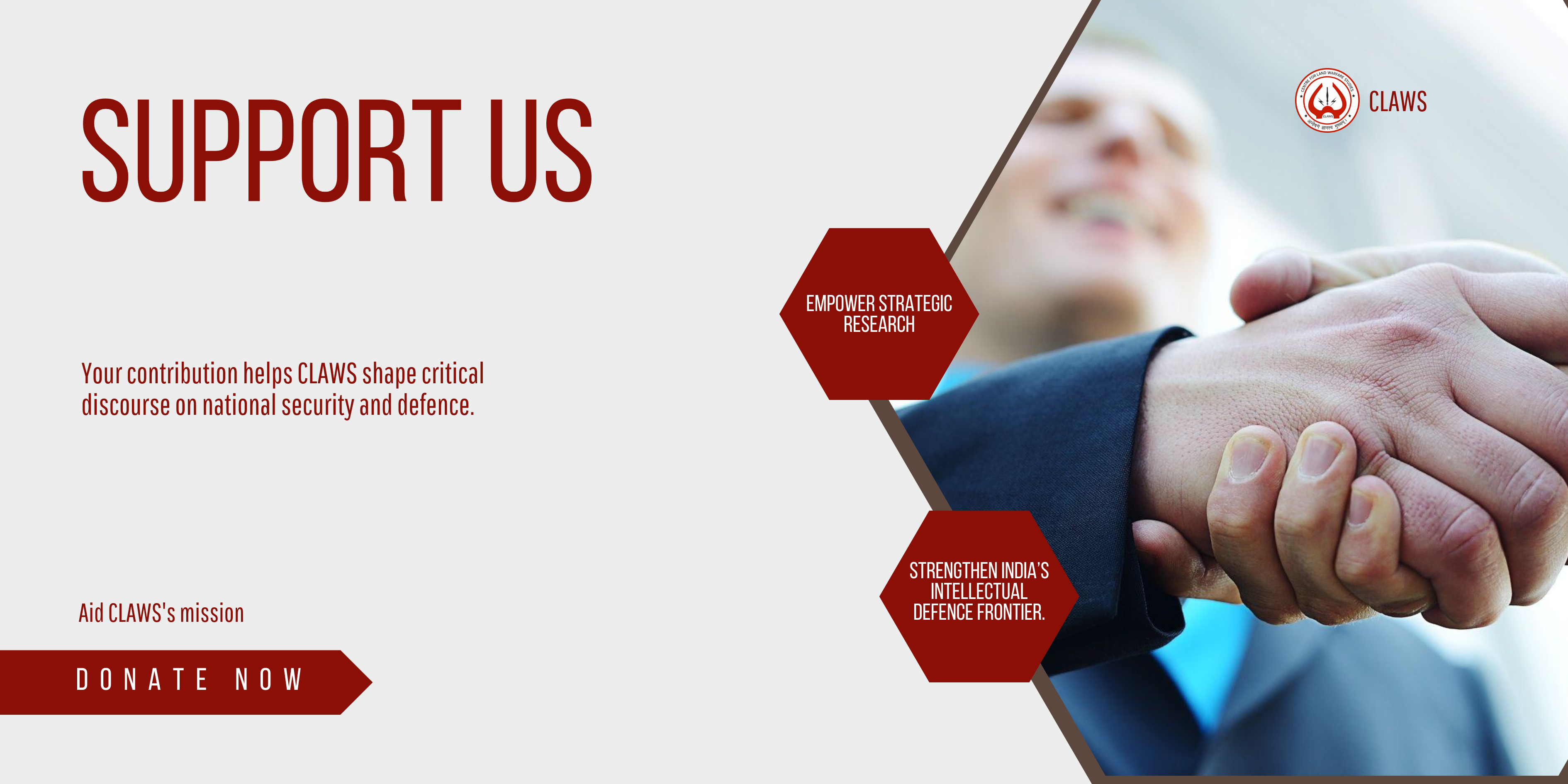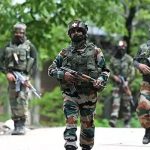On 3 September 2025, on the margins of Council of the Heads of the Shanghai Cooperation Organization (SCO) Member States and the SCO Plus Summit, the 13th meeting of senior administrative officials of the SCO, the Collective Security Treaty Organization (CSTO), and the Commonwealth of Independent States (CIS) took place in Beijing. The delegations were headed by respective Secretaries-General: Nurlan Yermekbayev of the SCO, Imangali Tasmagambetov of the CSTO, and Sergei Lebedev of the CIS.
The three Secretaries-General signed a roadmap for Strengthening Cooperation between the Organizations. They expressed that the SCO, CSTO, and CIS will play a growing role in maintaining security and peace in the Eurasian region, and work toward preventing instability. Additionally, while the text of the roadmap is not available, official sources stated that the “document reflects the organizations’ focus on forming a new Eurasian security architecture, developing economic cooperation, and collaborating in the cultural sphere.” They also signed a joint statement on the occasion of the 80th anniversary of the end of World War II and the foundation of the United Nations (UN).
As the roadmap underscores the shared responsibilities of the three organizations in the Eurasian space, Russia’s participation in all three could provide Moscow with an opportunity to advance its long-standing vision of a Eurasian-centered security order.
From Euro-Atlantic to Eurasia
Despite ongoing debates and discussions in Western media and academic circles on the Ukraine war, there remains to be a significant lack of consensus about Russia’s true intentions and objectives. Some believe that the war is driven by Putin’s desire to gain territories, others argue that the primary goal is to undermine NATO’s influence in the region through a showcase of military might and geographical gains, while also being conscious of not engaging directly in a war with the alliance. Whilst these discussions have produced noteworthy findings, it also becomes imperative to view the current developments from a Russian lens.
Moscow’s advocacy for a single Eurasian security architecture is grounded in the principle of “equal and indivisible security.” This framework mandates “that each state should enjoy an equal right to security in accordance with its national interests, therefore no state, nor group of states should gain advantage over others in exercising this right.” To put simply, the new security vision prioritises each nation’s right to determine its own path for security and development, giving primary importance to mutual respect and cooperation.
The roots of Russia’s security architecture can be traced back to the 1975 Helsinki Final Act, resulting in the founding of Conference on Security and Cooperation in Europe (CSCE), increasing dialogue between the West and East Europe. Subsequently leaders like Mikhail Gorbachev and Boris Yeltsin took the vision of this security framework forward. However, the security landscape of Europe and the broader transatlantic region were being shaped by the traditional Euro-Atlantic Model, led by institutions such as the NATO and the Organization for Security and Cooperation in Europe (OSCE), successor to the CSCE.
Discussion emerged against the backdrop of growing geopolitical fragmentation and rising tensions between Russia and the West, particularly NATO. Even after the disintegration of the Soviet Union, NATO not only survived but also grew to include former Warsaw Pact members, like Poland and Romania, among others, exacerbating tensions in the region. On the other hand, while OSCE in theory could bring together NATO countries and those that were not part of the alliance, including Russia, under a single community, it also underwent politicisation, aligning itself with the interests of Western nations. Thus, due to the lack of mechanisms which would take into account the interests of Russia and create a common security space, Moscow has increasingly viewed the eastward expansion of NATO as a security threat.
Marking a decisive shift, Putin’s speech at the 2007 Munich Security Conference highlighted Moscow’s unacceptance towards West’s unilateralism and betrayal to post-Cold War assurances. Later in 2008, then Russian President Dmitry Medvedev proposed the signing of a legally binding treaty for European security aiming to achieve “a comprehensive resolution of the security indivisibility and arms control issues in Europe,” putting more emphasis on resolving real challenges like climate change, illegal immigration, and global poverty.
The growing divide between Russia and the West has further intensified with the ongoing Ukraine war. Even though, the alliance members have not militarily involved themselves in the conflict, they have provided extensive political, economic and social support to Kiev, including arms, intelligence sharing and financial aid since 2022. This indirect involvement has only led to the widening in the geopolitical divide, reinforcing Moscow’s perception of NATO’s encroachment and prompting renewed efforts to reshape the regional security order in Eurasia.
In recent time, visible transitions have been noted during the Russian Foreign Minister Sergey Lavrov’s official visit to China in April 2024, where discussions with his Chinese counterpart Wang Yi, highlighted the prospects of establishing a new security architecture. The inclusion of this proposal in the negotiations between the two major powers itself indicates the potential to it taking a concrete shape, both in theory and practice. Lavrov linked the need for a new structure directly to the shortcomings of current Euro-Atlantic security framework, which is centered around NATO and the OSCE.
Challenges and Opportunities of the New Architecture
As Moscow manages to initiate dialogue with the major powers in the neighbourhood, analysts suggest that several key challenges remain.
Lack of a Comprehensive Draft Framework
One of the most puzzling issues is perhaps the lack of a comprehensive draft document of the new security framework. Despite Putin’s and senior Russian official’s repeated calls for the need of a new architecture, there remains no publicly presented draft outlining the fundamental principles, mechanisms, and institutional structures of such an architecture. This approach markedly diverges from the practices of the Western system, as they typically included detailed roadmaps and actions plans following the leaderships statement. While the Russian approach may be vague in terms of political substance, it allows for diplomatic flexibility, where other states can also become the authors of the framework through dialogue and cooperation, instead of a pre-written directive handed to them. Additionally, this increases the chances of like-minded nations to come together in order to form an architecture that works for the common good.
Concerns over Anti-Western Coalition Building
Critics wonder if Russia’s proposal for Eurasian security, if not completely but as part, is a strategic instrument to form a possible coalition against the West, particularly Washington. Although Moscow has improved its closeness with nations it considers part of global majority, it also understands that each of them have their own relations with the United States. An attempt to drive wedge between these states and Washington would likely be counterproductive, as these relations are determined by huge volumes of trade, diasporas, participation in supply chains, and other interests. Therefore, Russia’s emphasis on multipolarity should not be interpreted as an attempt to construct an anti-Western coalition, but rather seen as an acknowledgement of the need to engage with the changing geopolitical realities of the world.
Absence of an Ideological Foundation
Unlike the West-led frameworks which are often built upon shared set of values for example, democracy, collective defence, human rights, etc, Moscow’s proposal does not explicitly outline any ideological principles. Thus, the third challenge could be the absence of an ideological foundation in Russia’s Eurasian security architecture as a unifying factor. In contrast to the liberal-democratic norms of NATO or the human rights discourse embedded in OSCE frameworks, the Eurasian security vision lacks a normative backbone. Nevertheless, this could be a deliberate choice, through which Russia conveys that the complexity of the international relations cannot be captures within a single ideological framework. Therefore, this flexibility could make the initiative more inclusive and attractive to a broader range of countries across the Eurasian region.
Managing Diversity Across Eurasia
As Russia needs to address the complexities that come with the vast identities and cultures of the Eurasian continent, the final and perhaps most fundamental challenge may be to assess the feasibility of fitting its political, economic, and cultural diversity into a single security architecture. The difficulty lies not in articulating broad and inclusive visions, but in translating them into functional and adaptive mechanisms. Despite their limitations in terms of hierarchical structures and transparency, Western institutions offer a model that is well-organised through the coexistence of different formats such as NATO’s structured military alliance, the bureaucratic machinery of the EU, and more temporary groupings like troikas and quads, where even non-Western actors are active participants. Nevertheless, such an inclusion often remains limited, highlighting how diversity can hinder both discipline and efficiency. Therefore, in a region marked by overlapping fault lines, resource rivalries, and historical grievances, it is imperative to accept diversity as a structural reality rather than a barrier. Thus, Moscow should focus on promoting a flexible and pluralistic security framework that respects the autonomy of each nation while encouraging convergence through shared interests.
Conclusion
Despite the aforementioned challenges, the idea of a new Eurasian security architecture remains a powerful strategic narrative, particularly at a time of global transition. Through the developments during the course of the last three years of Ukraine crisis, one thing is clear – Moscow no longer seeks a place within the already established Euro-Atlantic security order but is actively advocating the creation of a new security architecture rooted in Eurasian values. This bid has increased Moscow’s bilateral with major regional powers and multilateral engagements within platforms such as the SCO, CSTO, CIS and BRICS. Therefore, highlighting Russia’s strategic pivot eastward and southward, toward Asia.
By distancing itself from traditional security frameworks that it deems to be exclusionary and ideologically rigid, Moscow has created an opportunity for itself for transforming erstwhile rules and norms. In an attempt to reimagine the fundamental security principles of Eurasia, Russia’s proposed framework presents a more multipolar, non-hierarchical, and ideologically flexible concept. Whether this vision materialises will depend not only on Moscow’s intentions, but also on its ability to translate rhetorical calls into concrete institutional frameworks, build consensus among diverse regional actors, and offer a model that is inclusive, transparent, and forward-looking.
Moreover, Russia’s bid is not merely reactionary or anti-Western. Rather, it underscores a long-standing dissatisfaction with the post-Cold War European security architecture and a renewed effort to adapt to emerging global realities. The challenges of pluralism, lack of ideological cohesion, and competing interests within Eurasia are real, yet they may also be Moscow’s greatest assets in constructing a system not built on conformity, but on coexistence.
In essence, this shift from a Euro-Atlantic framework to Eurasian framework, is Moscow’s vision of driving away from post-Cold War binaries, and attempting to rewrite the rules of engagement. Thus, the evolving vision which is still in its formative stage, marks a decisive moment that will reconfigure the global power structures and regional security dynamics.













